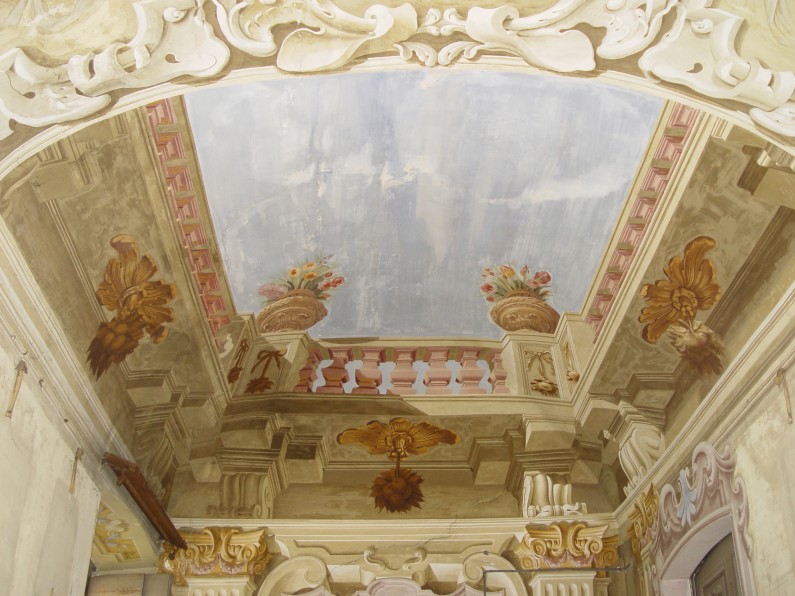
The long hall currently called the “Portraits Gallery” comprises a sole hall with a small chapel located adjacent to the halls assigned as the playroom of the children living in the house. Thus this hall had a dual function as a gallery of portraits and a private chapel. The presence of a room for religious rites has been documented ever since the place was built, and during the extension works, was recorded in the historical documents of Castellazzo.
More
However, the actual chapel is certainly the product of numerous modifications overlapping through time, as narrated also in the wall decorations achieved to cover the pseudo apses. To the right of the entrance, there is an ample niche enclosing a simple altar, today void of particular decorative elements. The inner space has decorations with highly deceptive false architecture painting, able to create the sensation of greater depth, obtained also through the painting depicting a small niche containing a monochrome painting of a statue. It is an elegant statue of the Virgin Mary portrayed in a long vest. The Madonna is depicted with her hands joint and her gaze turned towards heaven, with her feet lying on a pedestal made up of clouds and small angels. Beside the niche are two paintings of golden vases with big handles, loaded with flowers, and laid on a protruding shelf covered by a white table cloth. Above the false statue, three windows open out to an illusionistic path towards heaven. The hall is entirely painted with a play of perspective squares closely resembling the Galliari Hall and the richer examples of scenic painting typical of the templates of the Emilia Province. The author of these decorations is unknown, but they evidence the artist’s skills in re-creating two windows with false marble motifs that perfectly succeed in enclosing the space of the altar, and especially his mastery in creating a huge square hollow on the ceiling that gives a glimpse of the blue sky.
The upper part of the hall re-creates a beam of marble, with small spiral shelves on which the vases of flowers rest, painted with great realism and perspective abilities. Beside this illusionary architecture, there are paintings of false stucco medallions in monochrome, which have been greatly ruined, and where one can hardly recognise what seems to be a male figure on horseback, with cross references to olden times. In another painted medallion there is also the motto, “Obis e Talys.”
The portraits of the Arconati family that were hung on the walls of this long hall have disappeared or were lost. They must have illustrated in a blend of the sacred and profane, the love for art and the genealogy of this family of excellent art commissioners and collectors.

